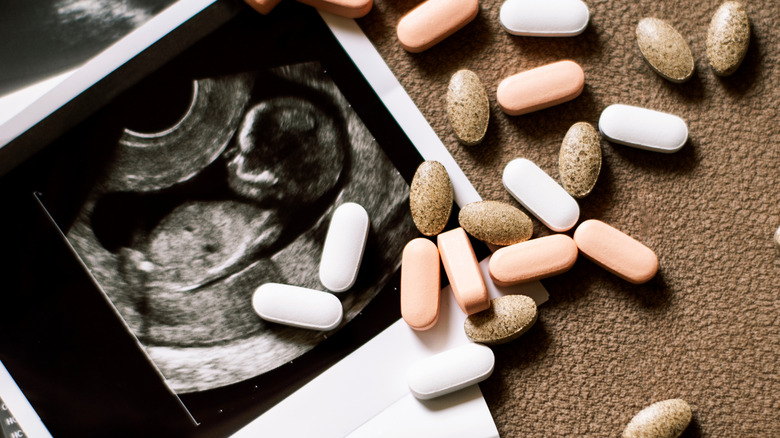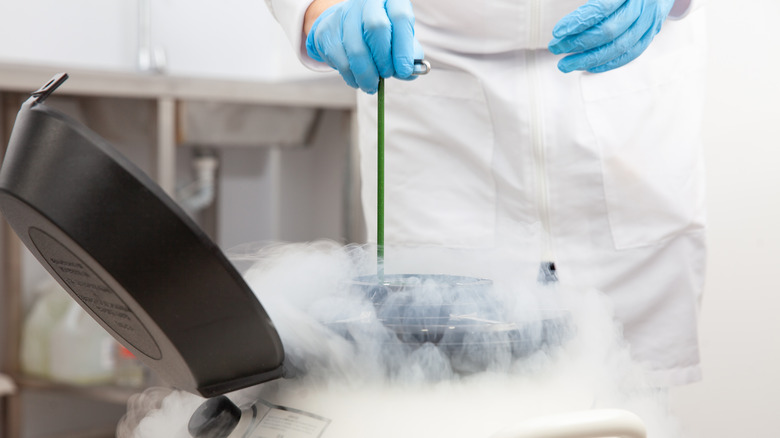The Difference Between Harvested Eggs And Viable Eggs When Undergoing IVF
It's suspected that issues with conception affect roughly 10% of women in the United States, according to Reunite Rx. As explained by Very Well Family, in cases where conception is not achieved within six to 12 months, a couple should consider making an appointment with their regular OB/GYN to assess the situation. During this appointment, you may be asked to provide things like the dates of your last six cycles, a list of medications, and any risk factors you are aware of. You may also want to get a list of your own questions together. As a result, your doctor may order a round of standard blood tests that can help paint a picture of the baseline circumstances that are at play.
In the event that your OB/GYN feels that referral to a specialist is necessary, your doctor will most likely provide you with the information of a reproductive endocrinologist that they trust, and may have worked with before. Your doctor may even walk you through what to expect when visiting a fertility clinic for the first time.
Not all eggs that are harvested, are viable
A reproductive endocrinologist is an obstetrician that specializes in the hormonal systems associated with reproduction, and the potential issues that come along with it, including fertility issues according to WebMD. From here the experience becomes bespoke to the person being treated. Some people are asked to begin their treatment with a simple round of oral medication, coupled with some lifestyle changes that may impact their IVF success, like improving their sleep habits, and some are recommended to begin IVF treatment, explains Very Well Family.
IVF is assisted reproductive technology that mimics a full menstrual cycle and is considered to be the most effective form of fertility treatment. The intention of this cycle is to collect, or harvest as many mature follicles, or eggs, as possible (via Mayo Clinic). However, not all eggs are created equal. Modern Fertility explains that just because during the retrieval process 20 eggs may have been collected, it does not mean that all 20 eggs are viable or candidates for fertilization and subsequent implantation.
IVF may provide options for your future
A viable, or mature follicle or egg is categorized as an egg that has reached approximately 20mm in size during the stimulation phase of your IVF cycle according to the Southern California Reproductive Center. The follicles that reach this size are considered to hold the best chances of being successfully fertilized, implanted, and resulting in a pregnancy. The Mayo Clinic reports that after ultrasound-guided retrieval, harvested eggs are preserved in a laboratory and are monitored closely.
Eggs that show signs of viability are then either frozen for later use or are fertilized and implanted in the uterus depending on the preference of the patient. Some patients also elect to perform genetic testing at this point to determine if the fertilized embryos carry certain genetic traits. Typically this kind of testing is done if one or both of the parents is a known carrier of an inheritable disease, according to Nova IVF. Depending on the number of viable eggs retrieved, some patients elect to both implant a fertilized embryo with the intention of becoming pregnant immediately, and also store or freeze excess viable eggs for the future.


